The F-150 is the most popular vehicle in America, and the truck’s versatility has been a major factor in that success. Which F-150 is Right for you?
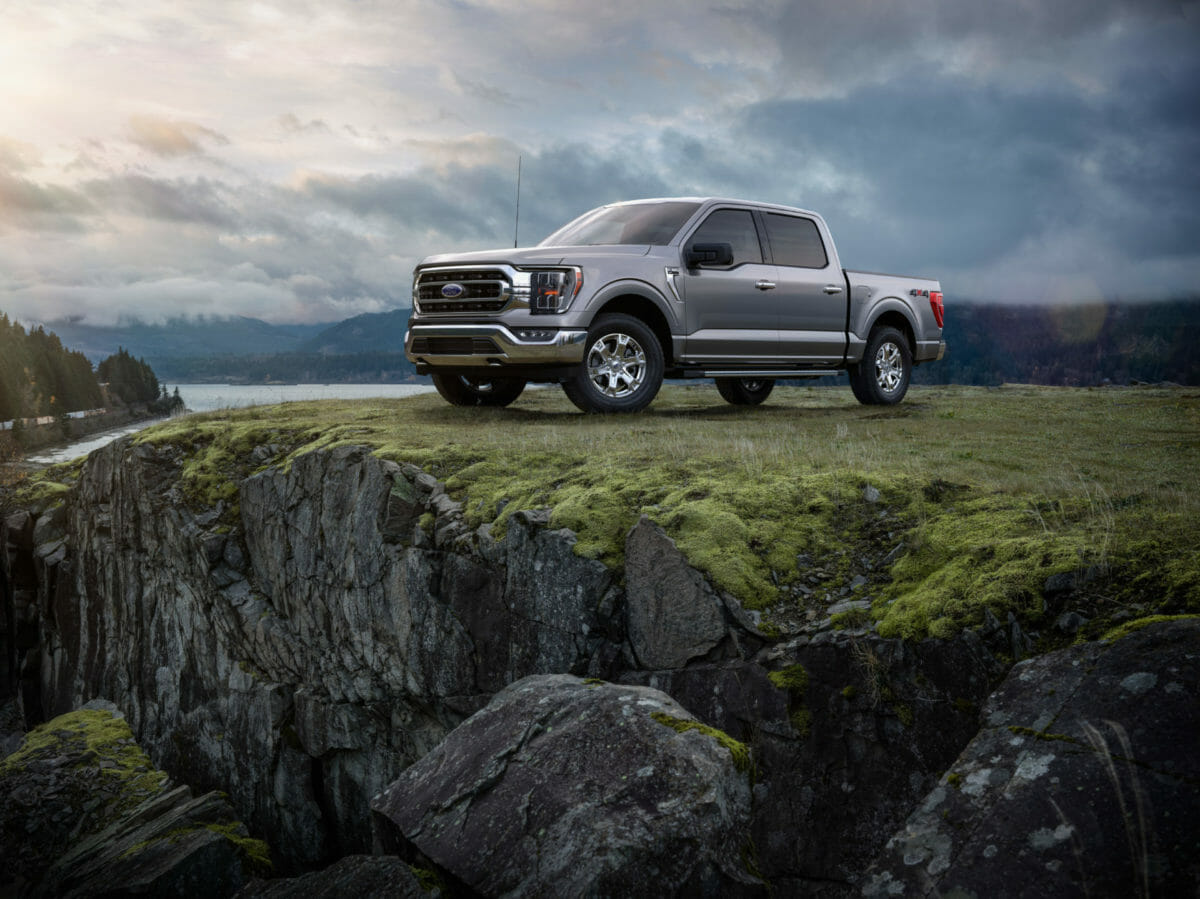
It’s possible for a truck like the Ford F-150 to be too small, and if you’re into lifted 4x4s and full-size off-roaders, you’re not gonna want to hear this, but it’s possible for a truck to be too big, too. Even if you follow a bigger-is-better philosophy when it comes to pickups, you’re eventually going to reach a point where the thing won’t even fit in your driveway.
As you probably know, the F-150 doesn’t come in just one size. Depending on your options, you could be looking at a difference of over three feet in length. Cab and bed sizes vary by several inches, so the difference between the smallest and biggest Ford F-150 configurations is the difference between a truck and a land-yacht.
This is a big part of why the F-150 continues to be the most popular vehicle in America. The truck can adapt to the needs of any driver. Whether you’re looking for a family vehicle with a bigger cab, a work truck with a bigger box, or a mudding machine with a lighter body and more ground clearance, you can configure the truck however you like. It excels at being a heavy-duty pickup, of course, but it doubles as a just-about-anything.
When you hop on the Ford website and start building your own F-Series, your first instinct may be to just slap the biggest features you can find on there. That can be a lot of fun, but it might not be practical. So first, you might want to measure your driveway or garage, and then take some time to familiarize yourself with your options and determine exactly how big you want your new truck to be.
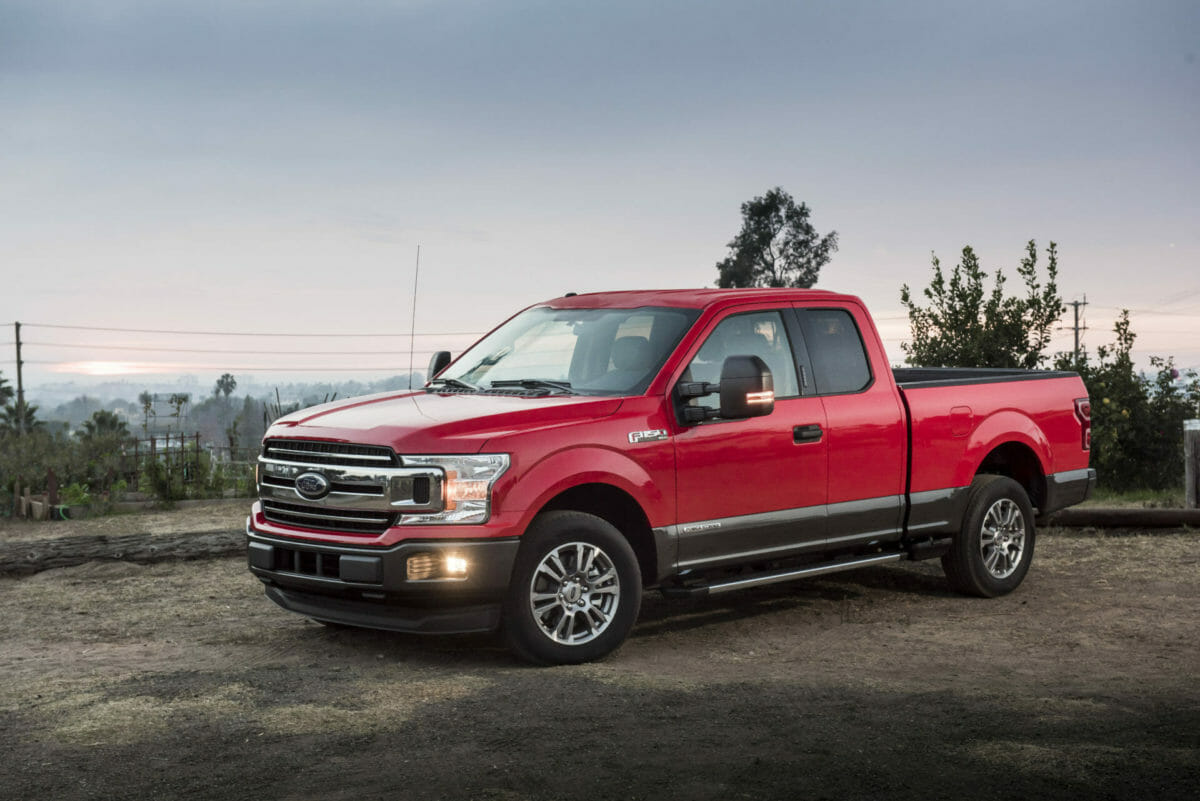
Ford F-150 Cab Options
When selecting or building an F-150, the first thing you’ll want to know about is cabs and boxes. You have three options for each. Cabs: Regular, SuperCab, and SuperCrew. For boxes, the choices are: 5.5′, 6.5,’ and 8.’
There are a few things you should know right up front about these options:
- Ford uses interior length to measure truck boxes, and they round down. The 8′ box, for instance, is actually about eight feet long on the inside, plus an inch and a half.
- The F-150 is not available with a SuperCrew cab and an 8′ box. You can have the biggest truck bed or the biggest truck cab, but you can’t have both, unless you’re really handy with a welding torch.
- All three cabs have the same power train, so the only difference you’ll see in performance will come down to engine choice and the total weight of the truck’s body.
- The last time Ford adjusted the dimensions of the boxes and cabs in the F-Series was in the 2015 model year, with the start of the thirteenth-generation models. The Blue Oval added a few more updates to the 2018 Ford F-150. Then, 2021 kicked off the fourteenth generation, but Ford chose to retain the basic box-and-cab structures they’d been using since the 2015 models. The specs listed in this section will cover the thirteenth/fourteenth generation models, and we’ll get into the older F-150s later.
With all of that in mind, let’s go over the important specs, starting with the cabs.
Ford F-150 Regular Cab
This is your basic two/three-seater truck cab. If this is your work truck (and your crew doesn’t mind riding in the back), this is all you need. If your F-150 is going to double as a family car, the interior is going to get a little crowded. If you fold the center console up, the Regular cab technically seats three. But if we’re talking about three full-grown adults, that’s gonna be a tight fit.
- Height: 75.6″ – 77.2″
- Width: 79.9″
- Length (with 5.5′ box): 209.1″
- Front head room: 40.8″
The Regular cab is ideal if you’re prioritizing power over everything else. Less weight in the front means the truck is going to have an easier time towing and hauling. Depending on your specs, the F-150 can pull up to around 12,000 lbs., and the easiest way to achieve that number is with a Regular cab and the 5.5′ box to cut back on curb weight.
There’s really not a lot of spare room inside this cab. You’ve got a few inches of extra space behind and below the seats, a glove box, a center console that folds down over the middle seat, and that’s about it. If you’re doing grocery trips, you’ll probably be putting most of your shopping in the bed.
Regular cabs offer superior visibility over SuperCab and SuperCrew. Across the board, F-150s offer decent visibility, but SuperCab and SuperCrew drivers have noted that the left-shoulder pillar is a bit obtrusive.
Ford F-150 SuperCab
The SuperCab comes with four doors and seating for six. The back-row bench seat gives you a nice bit of legroom, so unless you’re taxiing some NBA players around, you should have no problem fitting two or three full-grown adults back there. The SuperCab can be paired with any of the boxes, so you can go with a 5.5′ to maximize your towing power and fuel-efficiency, or the 8′ for hauling.
- Height: 75.6″ – 77.2″
- Width: 79.9″
- Length (with 5.5′ box): 231.7″
- Front head room: 40.8″
- Rear head room: 40.3″
- Rear legroom: 33.5″
If you want the most possible cargo space in your F-150, you want a SuperCab with an 8′ box. The rear bench in the SuperCab folds up, and the footwell is nice and flat, so you’ve got plenty of space back there for a full toolbox, a load of groceries, or a few pillows if you’re taking a rest-stop nap on a long road trip.
A really cool bonus with the SuperCab, and a reason why you might prefer it to the SuperCrew: you’ve got two front-hinged doors and two rear-hinged doors with no B-pillar. That means you can pop the whole cab open to easily move cargo in and out without turning and twisting it around.
There’s not much in the way of extra slots and pockets in the back. With the SuperCab, it’s not an SUV, it’s a truck with a few extra seats.
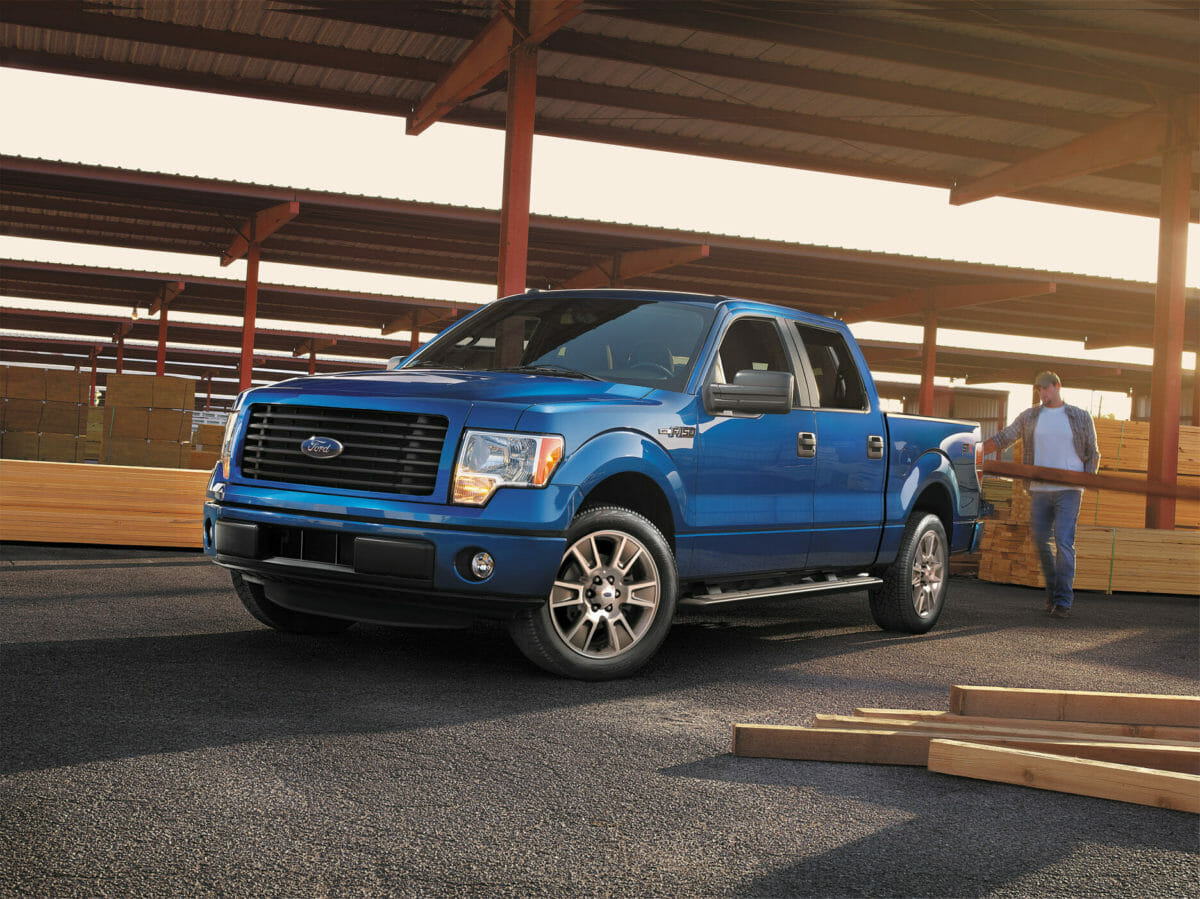
Ford F-150 SuperCrew
With the SuperCrew, you sacrifice the 8′ box option, but you get an extra ten inches of legroom in the back over the SuperCab, four front-hinged doors, power windows in the back, plus some extra cup holders, side-pockets, and slots for putting drinks, phones, notebooks and so on.
- Height: 75.6″ – 77.2″
- Width: 79.9″
- Length (with 5.5′ box): 243.7″
- Front head room: 40.8″
- Rear head room: 40.3″
- Rear legroom: 43.7″
With a SuperCrew cab, you’re moving away from work truck and towards SUV. A Ford F-150 is a capable hauler, tower and off-roader no matter how you configure it. But with the SuperCrew cab you’re prioritizing the passenger experience over raw power. The extra weight is going to cost you some towing performance, and your box won’t go any bigger than the 6.5′ if you’re driving a SuperCrew. All of this makes the SuperCrew the ideal choice if you need a family vehicle that doubles as a work truck, while ranking it behind the Regular and SuperCab if you need a dedicated work truck.
Something worth noting is that the SuperCrew and SuperCab offer pretty much the same shoulder, hip, and headroom. Add to that, the rear foot-well is not flat. That means that the biggest advantage of the SuperCrew is that you get ten extra inches of legroom.
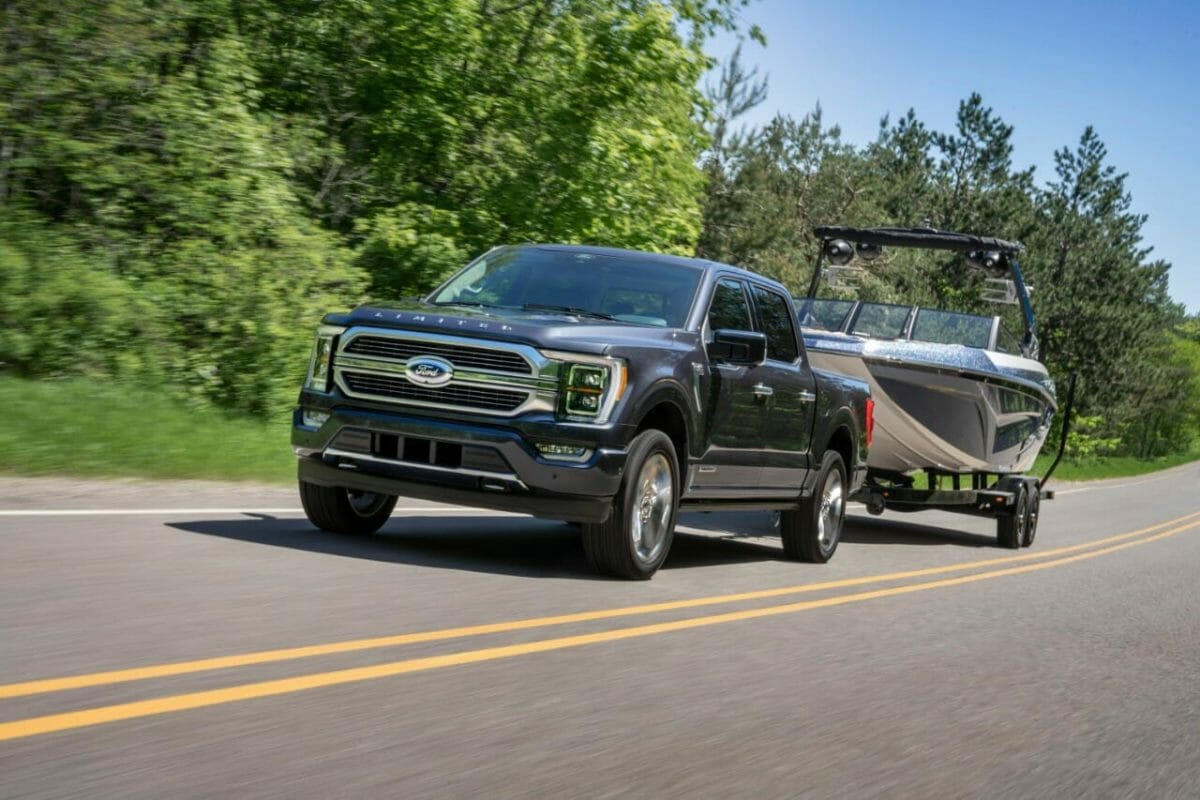
Ford F-150 Box Options
When it comes to Ford F-150 boxes, none of them come with any bells and whistles. Ford has kept its box design pretty basic over the years, and exterior width for all three options is the same as the cabs: 79.9″ across the board. So, in order to make an informed decision, you mainly need to know the interior dimensions. So, let’s dive right in.
5.5′
- Interior width: 65.2″
- Interior depth: 21.4″
- Interior length: 67.1″
- Cargo capacity: 52.8 cu. ft.
The 5.5′ is “big enough” for most light-duty hauling. If you’re helping a friend move, if you’re carrying a load of bricks for a construction project, if you just want to throw the mountain bikes in the back instead of strapping them to the roof, you’ve got plenty enough room for that. But you are making a tradeoff here, giving up cargo capacity for efficiency and maneuverability. On the upside, that means nobody’s going to ask if you can help them pick up that piano they just inherited from their uncle.
6.5′
- Interior width: 65.2″
- Interior depth: 21.4″
- Interior length: 78.9″
- Cargo capacity: 62.3 cu. ft.
The average refrigerator is about 70 inches tall, so you’ve got plenty of room to carry most appliances in the back of a 6.5′ without dropping the tailgate. And if you do drop the tailgate, you can carry a load of 2x4s without worrying about them tumbling out onto the road.
8′
- Interior width: 65.2″
- Interior depth: 21.4″
- Interior length: 97.6″
- Cargo capacity: 77.4 cu. ft.
The average sofa is about 86 inches. That means you’ve got almost an extra foot of space left after packing one into the back of an 8′ F-150 box. A standard 2×4 from Home Depot measures 96 inches long, meaning you can comfortably pack a load of them into this box without having to pull the tailgate down.
A king-size mattress measures over 11 by 9 feet, so that’s not gonna fit in any standard pickup truck. But a queen-size comes in at 60 inches by 80, so it should fit right in there.
Basically, if you’re investing in a work truck, and you intend to do a lot of hauling, there’s no reason not to go with the 8′ box.
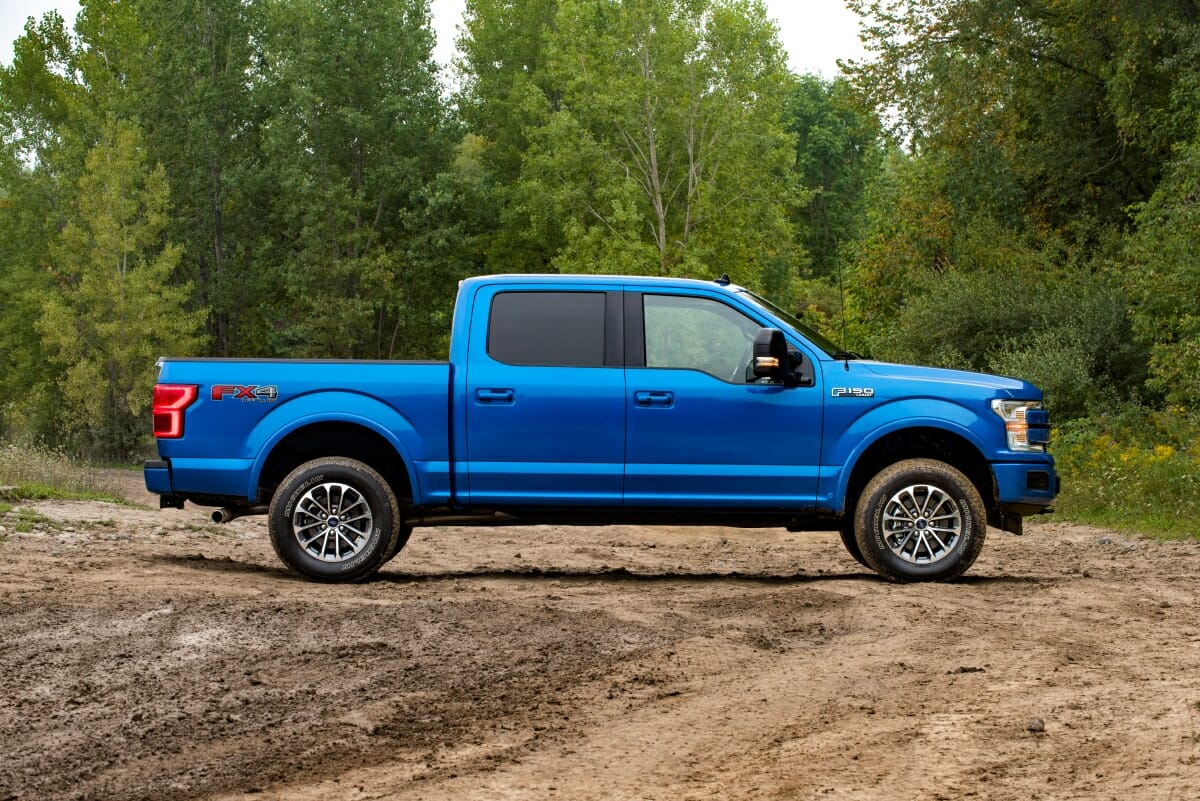
F-150 Dimensions: Old vs. New
The modern F-150 really started with the tenth generation, which debuted in 1997. In the ’90s, we saw a shift in family vehicles away from sedans and towards the SUV. At the same time, there was increased demand for trucks that could function as family vehicles, where pickups had previously been regarded strictly as work vehicles.
Ford responded by splitting up the F-Series, with the F-250s and F-350s serving as dedicated work trucks, and the F-150s being offered in a wider range of configurations to suit the needs of the individual driver.
If you’re buying a used F-150 from before the 2015 redesign, you’re probably shopping for an eleventh or twelfth generation truck, which date from 2004 to 2008, and 2008 to 2014, respectively. So, what do you need to know if you’re shopping for an older F-150?
- Older F-150s are heavier. The thirteenth and fourteenth-generation models use aluminum alloy body panels, which reduce the overall weight by an average of around 750 lbs. without shrinking the exterior dimensions. You can feel the difference on the road, so don’t expect a 2014 to corner like a 2015 does just because they share a lot of outside measurements.
- 2004-2008 cabs did not have a two-door option. The Regular cab had a couple of reverse-open doors that would allow you to reach the cargo space behind the front seats. The two-door option was restored in the 2009 models.
- F-150 box options have remained the same since 2009: 5.5′, 6.5′ and 8.’ Before that, Ford offered “Styleside” in 6.5′ and 8′, and “Flareside” in 6.5′. Flareside was what they called Stepside, which means that the rear fenders are on the outside of the truck bed, giving you more interior cargo space. Since 2009, all F-150s are Styleside, or simply “Standard,” with wheel-wells inside the truck bed.
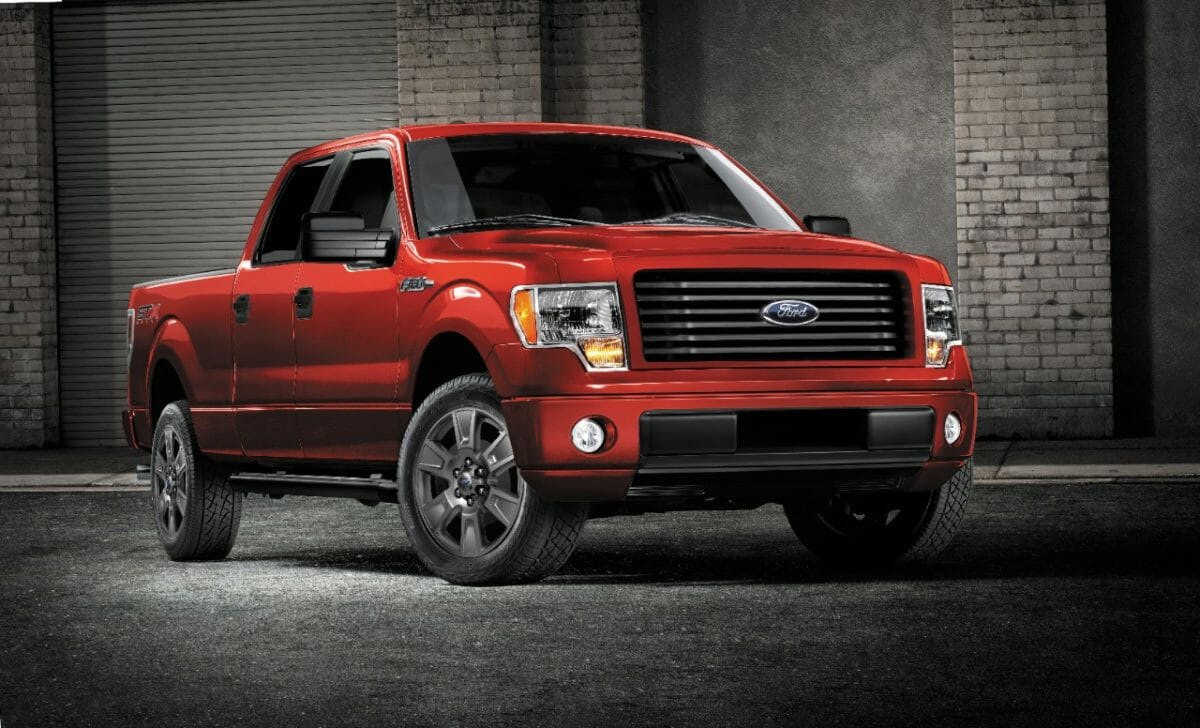
Ford F-150 vs. the Competition
In terms of exterior dimensions, there’s not too much difference between the F-150, Silverado, and Ram 1500. One may be a half-inch wider here, a couple inches shorter there, but if your garage will fit one, it’ll fit the others. So our main concern here is going to be what we can fit inside the truck in terms of passengers and cargo.
With a new Dodge Ram 1500, you only have a few configuration options: quad cab with 6’4″ bed, crew cab with 5’7″ bed, and crew cab with 6’4″ bed. If cargo capacity is your chief concern, then we already have a clear winner with any new or older 8′ F-150.
With a Chevy Silverado you can get a regular, double, or crew cab, and your bed options are short, standard, and long. Long beds stretch 98.18″ on the inside with 89.1 cu. ft. of cargo space, but they only pair with the two-seat regular cab. The Standard bed measures 79.44″ with 71.1 cu. ft. of cargo space, and the short bed measures 69.92″ for 62.9 cu. ft. of cargo space.
With a long bed, the Silverado can carry almost anything you’d put in an 8′ F-150, but the F-150 can pair that 8′ bed with a six-seat SuperCab. With a Silverado you have to choose between cargo and passenger space. With an 8′ SuperCab F-150, you get the best of both worlds.
Take your time, shop around. You may well find that a Silverado suits your needs better than an F-150. But when it comes to the sheer range of options you have to mix and match cabs and boxes, Ford clearly outclasses the competition.
Photos: Ford
